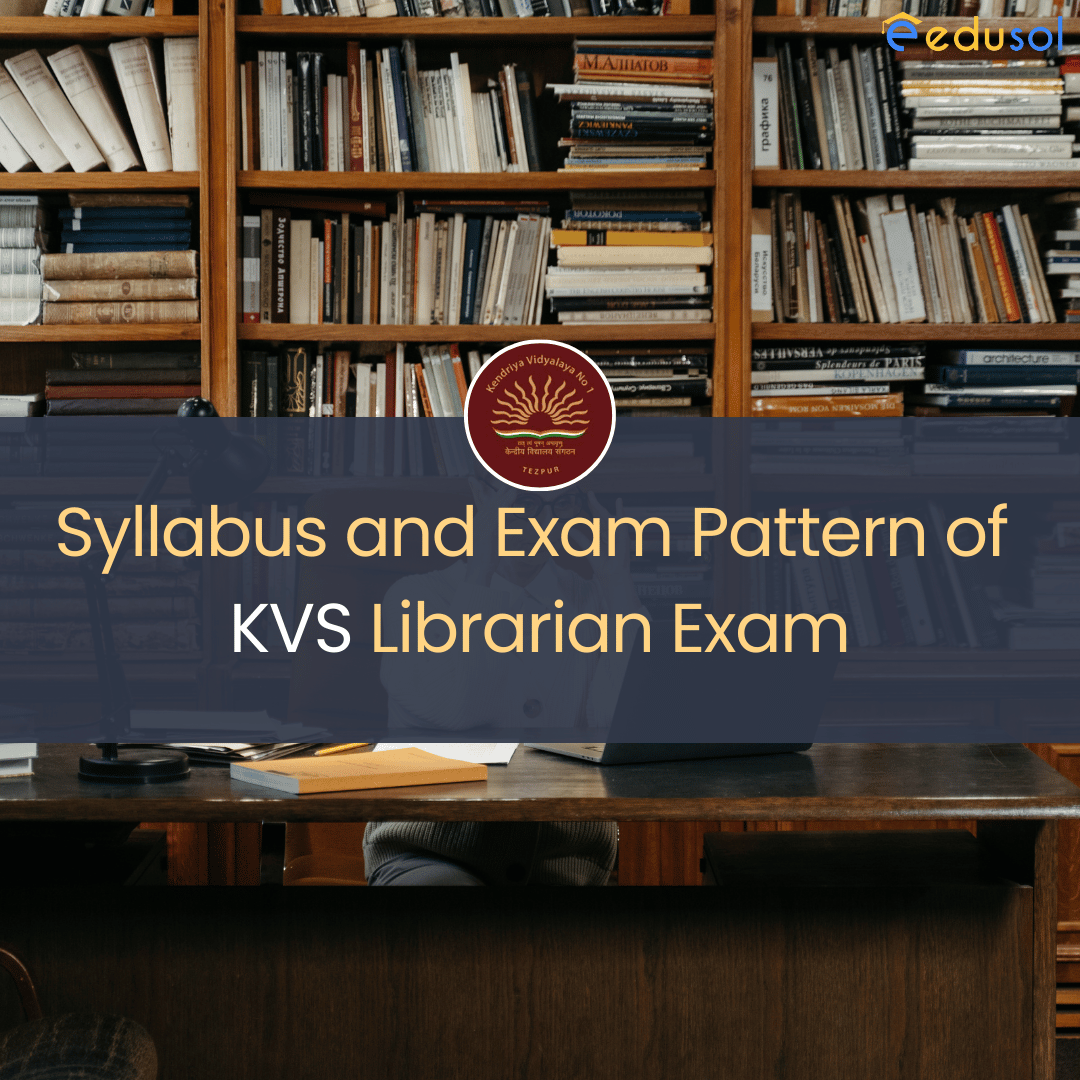Below is a detailed explanation of the Syllabus and Exam Pattern for the Kendriya Vidyalaya Sangathan (KVS) Librarian recruitment exam, based on the latest available information as of April 02, 2025. The KVS Librarian exam is designed to assess candidates’ proficiency in general knowledge, language skills, reasoning, computer literacy, and subject-specific expertise in Library and Information Science.
KVS Librarian Exam Pattern
The KVS Librarian recruitment process typically consists of two stages:
- Written Examination (Computer-Based Test – CBT): This is an objective-type test with multiple-choice questions (MCQs).
- Professional Competency Test: This includes a Demo Teaching session and an Interview (for candidates who qualify the written exam).
Written Examination Details
- Total Marks: 180 marks
- Total Questions: 180 MCQs
- Duration: 180 minutes (3 hours)
- Marking Scheme: Each question carries 1 mark, and there is no negative marking.
- Medium: Bilingual (English and Hindi), except for language-specific sections.
The written test is divided into multiple parts, assessing both general aptitude and subject-specific knowledge. The structure is as follows:
| Part | Sections | Number of Questions | Marks |
|---|---|---|---|
| Part I | General English | 10 | 10 |
| General Hindi | 10 | 10 | |
| Part II | General Knowledge & Current Affairs | 10 | 10 |
| Reasoning Ability | 10 | 10 | |
| Computer Literacy | 10 | 10 | |
| Part III | Perspectives on Education and Leadership | 40 | 40 |
| Part IV | Subject-Specific (Library & Information Science) | 100 | 100 |
| Total | 180 | 180 |
KVS Librarian Syllabus
The syllabus is divided into two main sections: general aptitude (Parts I, II, and III) and subject-specific knowledge (Part IV). Below is a detailed breakdown:
Part I: Proficiency in Languages
- General English (10 Questions, 10 Marks)
- Vocabulary (synonyms, antonyms, word formation)
- Grammar (articles, tenses, prepositions, subject-verb agreement)
- Sentence completion, rearrangement, and correction
- Comprehension passages
- Idioms and phrases
- Spelling errors
- General Hindi (10 Questions, 10 Marks)
- शब्दावली (पर्यायवाची, विलोम, शब्द निर्माण)
- व्याकरण (संधि, समास, कारक, वचन, लिंग)
- वाक्य संरचना और सुधार
- मुहावरे और लोकोक्तियाँ
- अपठित गद्यांश
- वर्तनी की त्रुटि
Part II: General Awareness, Reasoning, and Computer Literacy
- General Knowledge & Current Affairs (10 Questions, 10 Marks)
- Current events (national and international)
- Books and authors
- Awards and honors
- Important days and events
- Science and technology
- Sports
- Indian history, geography, polity, and economy
- Reasoning Ability (10 Questions, 10 Marks)
- Analogies and similarities
- Series (number, alphabet)
- Coding-decoding
- Blood relations
- Ranking and order
- Logical reasoning (statements, conclusions)
- Non-verbal reasoning (patterns, figures)
- Computer Literacy (10 Questions, 10 Marks)
- Fundamentals of computer systems
- Basics of operating systems
- MS Office (Word, Excel, PowerPoint)
- Keyboard shortcuts and their uses
- Computer networks
- Cyber security basics
- Internet and its applications
Part III: Perspectives on Education and Leadership (40 Questions, 40 Marks)
- Understanding the learner (child psychology, learning styles)
- Understanding teaching-learning processes
- Classroom management
- Educational leadership and management
- Role of libraries in education
- Pedagogical approaches and assessment techniques
Part IV: Subject-Specific Syllabus (Library & Information Science) (100 Questions, 100 Marks)
This section tests in-depth knowledge of Library and Information Science. The syllabus is typically divided into the following units:
- Foundation of Library & Information Science
- Library as a social institution: Historical and social foundations
- Types of libraries (Academic, Public, Special) and their functions
- Role of UGC in the development of academic libraries
- Formal and informal education through libraries
- Normative principles of Library and Information Science (e.g., Ranganathan’s Five Laws)
- Knowledge Organization, Information Processing & Retrieval
- Classification systems (DDC, UDC, CC)
- Cataloguing (AACR2, MARC, RDA)
- Subject indexing and thesaurus
- Information retrieval systems
- Metadata and bibliographic standards
- Information Technology and Library Automation
- Basics of IT in libraries
- Library management software (e.g., KOHA, LibSys)
- Digital libraries and repositories (e.g., DSpace)
- Barcode and RFID technology
- Internet and database searching
- Management of Libraries & Information Centers
- Principles of library management
- Collection development and acquisition
- Budgeting and resource allocation
- Human resource management in libraries
- Planning and evaluation of library services
- Information Sources and Services
- Types of information sources (primary, secondary, tertiary)
- Reference and information services
- Current awareness services (CAS) and selective dissemination of information (SDI)
- Evaluation of information sources
- Library Users
- Information needs of users
- User education and orientation programs
- Techniques for library surveys
- User studies and feedback mechanisms
Key Notes
- The written exam focuses heavily on Library and Information Science (100 out of 180 marks), making subject-specific preparation critical.
- The Professional Competency Test evaluates practical skills (Demo Teaching) and communication abilities (Interview), so candidates should prepare to demonstrate their teaching and interpersonal skills.
- Candidates are advised to refer to the official KVS website (kvsangathan.nic.in) for the latest syllabus and exam pattern updates, as minor changes may occur with each recruitment cycle.
This detailed syllabus and exam pattern should provide a comprehensive roadmap for your preparation for the KVS Librarian exam. Focus on both theoretical knowledge and practical application to excel in the recruitment process!


